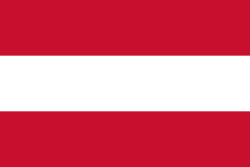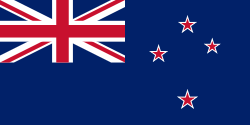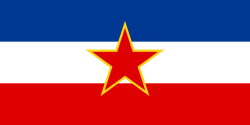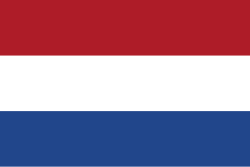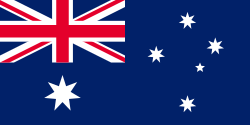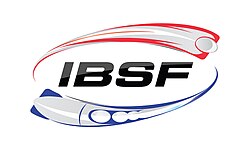Skeleton-Weltmeisterschaft 1991
| Skeleton-Weltmeisterschaft 1991 | |||||||||
|---|---|---|---|---|---|---|---|---|---|
| Disziplin | Skeleton | ||||||||
| Geschlecht | Männer | ||||||||
| Teilnehmer | 43 Athleten aus 16 Nationen | ||||||||
| Austragungsort | |||||||||
| Wettkampfort | Olympia Eiskanal | ||||||||
| Wettkampfphase | 31. Januar (1. und 2. Lauf) 1. Februar (3. und 4. Lauf) | ||||||||
| |||||||||
| ← Königssee 1990 | |||||||||
| Calgary 1992 → | |||||||||
Die 4. Skeleton-Weltmeisterschaft 1991 fand am 31. Januar und 1. Februar 1991 in Igls in Österreich statt.
Männer
Am Start waren 43 Sportler aus 16 Landesverbänden.
| Platz | Sportler | Land | Lauf 1 | Lauf 2 | 1. Tag | Lauf 3 | Lauf 4 | Endzeit |
|---|---|---|---|---|---|---|---|---|
| 1 | Christian Auer | 54.36 | 54.53 | 1:48.89 | 54.34 | 54.44 | 3:37.67 | |
| 2 | Andi Schmid | 54.24 | 54.83 | 1:49.07 | 54.17 | 54.74 | 3:37.98 | |
| 3 | Michael Grünberger | 54.56 | 54.62 | 1:49.18 | 54.43 | 54.49 | 3:38.10 | |
| 4 | Franz Plangger | 54.68 | 54.87 | 1:49.55 | 54.28 | 54.39 | 3:38.22 | |
| 5 | Gregor Stähli | 54.48 | 54.59 | 1:49.07 | 54.46 | 54.70 | 3:38.23 | |
| 6 | Bruce Sandford | 55.12 | 55.70 | 1:50.82 | 55.00 | 55.49 | 3:41.31 | |
| 7 | Thomas Platzer | 55.17 | 55.55 | 1:50.72 | 55.98 | 55.42 | 3:42.12 | |
| 8 | Richard Baumann | 55.33 | 55.63 | 1:50.96 | 55.77 | 55.41 | 3:42.14 | |
| 9 | Heinz Fischer | 55.03 | 56.00 | 1:51.03 | 55.89 | 55.25 | 3:42.17 | |
| 10 | Fred Markl | 55.25 | 55.59 | 1:50.84 | 55.71 | 55.93 | 3:42.48 | |
| 11 | Orvie Garrett | 55.51 | 56.09 | 1:51.60 | 55.68 | 55.41 | 3:42.69 | |
| 12 | Marco Filippin | 55.88 | 55.78 | 1:51.66 | 56.07 | 55.46 | 3:43.19 | |
| 13 | Jürg Wenger | 55.54 | 55.75 | 1:51.29 | 56.21 | 56.14 | 3:43.64 | |
| 14 | Gary Williams | 55.39 | 56.38 | 1:51.77 | 55.79 | 56.05 | 3:44.11 | |
| 15 | Terry Holland | 56.19 | 56.31 | 1:52.50 | 55.96 | 56.23 | 3:44.69 | |
| 16 | Renato Bussola | 56.32 | 56.62 | 1:52.94 | 56.16 | 56.09 | 3:45.19 | |
| 17 | Ogi Sokolovic | 56.60 | 56.26 | 1:52.86 | 56.00 | 56.43 | 3:45.29 | |
| 18 | Marco Widmer | 55.74 | 56.65 | 1:52.39 | 56.33 | 56.78 | 3:45.50 | |
| 19 | Stefan Meier | 56.49 | 56.45 | 1:52.94 | 56.88 | 56.60 | 3:46.42 | |
| 20 | Oliver Filippin | 56.51 | 56.71 | 1:53.22 | 56.78 | 56.77 | 3:46.77 | |
| 21 | Charles Langhorne | 57.10 | 56.48 | 1:53.58 | 56.78 | 56.64 | 3:47.00 | |
| 22 | Mark Wood | 56.96 | 57.00 | 1:53.96 | 56.73 | 56.64 | 3:47.33 | |
| 23 | George Kenter | 57.35 | 57.44 | 1:54.79 | 56.60 | 56.47 | 3:47.36 | |
| 24 | Danny Bryant | 56.94 | 57.29 | 1:54.23 | 56.87 | 57.17 | 3:48.27 | |
| 25 | Darren Whittington | 57.01 | 57.37 | 1:54.38 | 56.99 | 57.16 | 3:48.53 | |
| 26 | Stuart Baker | 57.25 | 57.16 | 1:54.41 | 56.94 | 57.31 | 3:48.66 | |
| 27 | John Garry | 57.31 | 57.33 | 1:54.64 | 57.22 | 57.08 | 3:48.94 | |
| 28 | Graham Ainge | 57.44 | 57.33 | 1:54.77 | 57.16 | 57.16 | 3:49.09 | |
| 29 | Pavel Lubas | 57.57 | 57.80 | 1:55.37 | 57.01 | 57.20 | 3:49.58 | |
| 30 | Dave Graham | 57.55 | 57.88 | 1:55.43 | 57.21 | 57.36 | 3:50.00 | |
| 31 | Pierre Michel | 57.50 | 57.87 | 1:55.37 | 57.63 | 57.60 | 3:50.60 | |
| 32 | David Moyse | 58.30 | 57.40 | 1:55.70 | 57.19 | 57.95 | 3:50.84 | |
| 33 | Desmond Tighe | 57.93 | 57.90 | 1:55.83 | 57.58 | 58.55 | 3:51.96 | |
| 34 | Egon Markart | 57.69 | 59.23 | 1:56.92 | 57.92 | 57.90 | 3:52.74 | |
| 35 | Stepan Chroustovsky | 58.53 | 59.03 | 1:57.56 | 58.59 | 58.41 | 3:54.56 | |
| 36 | Marek Jiricko | 58.82 | 58.45 | 1:57.27 | 58.69 | 59.15 | 3:55.11 | |
| 37 | Roland Martiny | 58.91 | 59.61 | 1:58.52 | 58.84 | 59.27 | 3:56.63 | |
| 38 | Glenn Brown | 59.76 | 59.58 | 1:59.34 | 58.74 | 58.98 | 3:57.06 | |
| 39 | Olivier Collin | 1:00.20 | 59.77 | 1:59.97 | 58.98 | 59.76 | 3:58.71 | |
| 40 | David Sanz Consuerga | 1:03.71 | 1:02.14 | 2:05.85 | 1:03.31 | 1:00.84 | 4:10.00 | |
| 41 | Carlos Rodriguez de Valcárcal | 1:03.39 | 1:02.50 | 2:05.89 | 1:02.31 | 1:02.07 | 4:10.77 | |
| Muki Hadziabdic | 56.34 | 56.47 | 1:52.81 | |||||
| Bill O’Chee | 57.47 | 57.61 | 1:55.08 | |||||
| Ladislav Halama | 58.45 |
Medaillenspiegel
| Platz | Land | Gold | Silber | Bronze | Gesamt |
|---|---|---|---|---|---|
| 1 | 1 | 1 | 1 | 3 |
Weblinks
Auf dieser Seite verwendete Medien
Flagge Österreichs mit dem Rot in den österreichischen Staatsfarben, das offiziell beim österreichischen Bundesheer in der Charakteristik „Pantone 032 C“ angeordnet war (seit Mai 2018 angeordnet in der Charakteristik „Pantone 186 C“).
Die quadratische Nationalfahne der Schweiz, in transparentem rechteckigem (2:3) Feld.
Flag of Canada introduced in 1965, using Pantone colours. This design replaced the Canadian Red Ensign design.
Flag of the Socialist Federal Republic of Yugoslavia (1946-1992).
The design (blazon) is defined in Article 4 of the Constitution for the Republic of Yugoslavia (1946). [1]
Flag of the Socialist Federal Republic of Yugoslavia (1946-1992).
The design (blazon) is defined in Article 4 of the Constitution for the Republic of Yugoslavia (1946). [1]
Flagge des Vereinigten Königreichs in der Proportion 3:5, ausschließlich an Land verwendet. Auf See beträgt das richtige Verhältnis 1:2.
Flagge des Vereinigten Königreichs in der Proportion 3:5, ausschließlich an Land verwendet. Auf See beträgt das richtige Verhältnis 1:2.
Man sagt, dass der grüne Teil die Mehrheit der katholischen Einwohner des Landes repräsentiert, der orange Teil die Minderheit der protestantischen, und die weiße Mitte den Frieden und die Harmonie zwischen beiden.
Flag of Australia, when congruence with this colour chart is required (i.e. when a "less bright" version is needed).
See Flag of Australia.svg for main file information.
